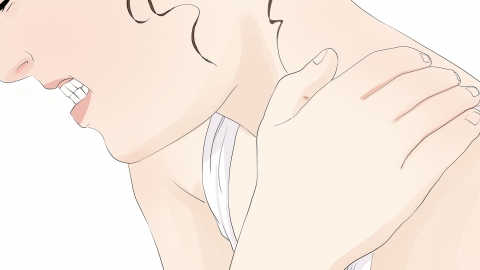What causes neck and shoulder muscle strain with pain lasting for two months?
Generally, neck muscle strain lasting for two months may be caused by prolonged poor posture, overexertion, neck and shoulder fasciitis, cervical spondylosis, or cervical facet joint dysfunction. It is recommended to seek medical attention promptly, identify the underlying cause, and receive symptomatic treatment under a doctor's guidance. Specific analysis is as follows:

1. Prolonged poor posture: Long-term habits such as looking down at mobile phones or working at a desk can keep the neck muscles in a constant state of tension, leading to strain and pain. Adjust sitting and standing postures, maintain a neutral position of the cervical spine, get up and move the neck and shoulders every hour, perform head-lifting and neck-rotation exercises to relieve muscle tension.
2. Overexertion: Frequent heavy use of the neck and shoulders or sudden intense physical activity can damage muscle fibers, resulting in persistent pain for up to two months. Reduce load-bearing activities involving the neck and shoulders, avoid strenuous exercise, and apply heat therapy to the lower neck area to improve blood circulation and accelerate muscle recovery.
3. Neck and shoulder fasciitis: Repeated stretching or exposure to cold can cause aseptic inflammation in the fascia beneath the neck, leading to chronic pain that worsens with pressure. Patients may follow medical advice to take medications such as celecoxib capsules, diclofenac sodium sustained-release tablets, or eperisone hydrochloride tablets. Fascial release procedures may also be used to resolve fascial adhesions and alleviate pain.
4. Cervical spondylosis: Herniated cervical discs compressing nerves and muscles below the neck can lead to strain and pain, possibly accompanied by arm numbness and dizziness. Patients may take ibuprofen sustained-release capsules, mecobalamin tablets, or Jingfukang granules as directed by a physician. In severe cases, anterior cervical discectomy and fusion surgery may be required to relieve nerve compression.
5. Cervical facet joint dysfunction: Abnormal positioning of the small cervical joints can irritate surrounding muscles and nerves, causing long-term strain and pain in the neck muscles, which may intensify during head movements. Under medical supervision, manual reduction may be performed, combined with medications such as etoricoxib tablets, glucosamine hydrochloride capsules, or Huoxue Zhitong capsules to improve joint function and relieve pain.
In daily life, choose a pillow with an appropriate height—neither too high nor too low—to maintain the natural physiological curve of the cervical spine. Perform moderate neck and shoulder stretching exercises, such as chin tucks against a wall or scapular retraction, to strengthen neck and shoulder muscles and prevent recurrence of pain.




